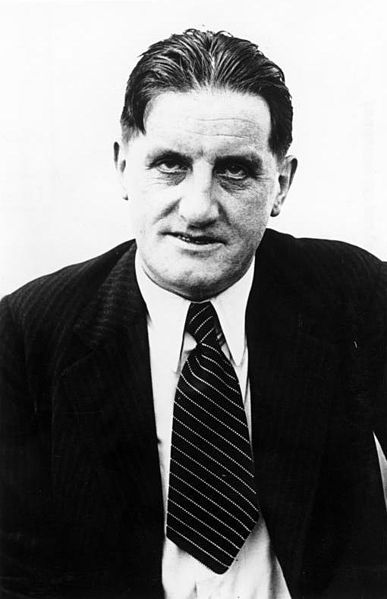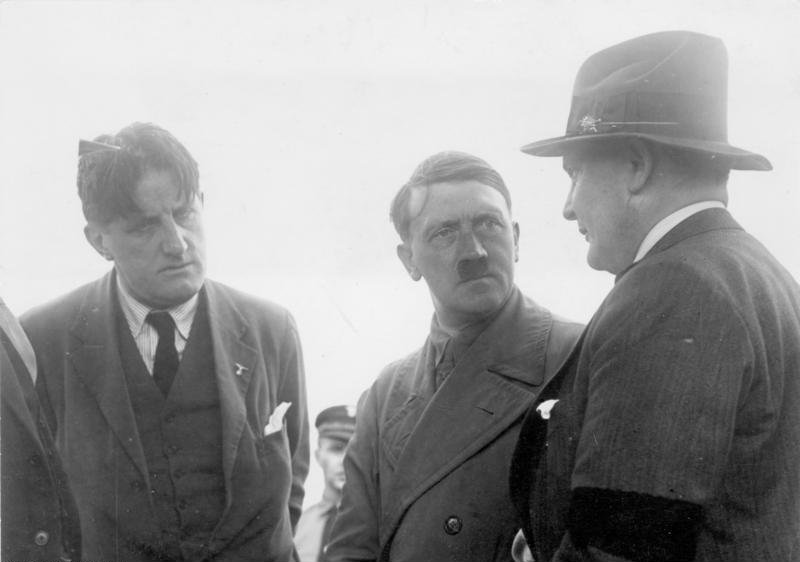Free speech has been a major topic lately, with fear of “cancel culture” going too far and the power that major social media platforms have when it comes to the impact of their censorship. Elon Musk, who last year became CEO of Twitter, has acted as a champion of free speech, and he reinstated several controversial accounts shortly after acquiring the company.
One such account was that of Nick Fuentes, who posted on Truth Social about the “Jewish World Order.” Musk’s Twitter brought him back, but Fuentes unleashed a flurry of antisemitic activity right afterward. So Twitter had to suspend him again, within only hours of his reinstatement. So we see that even Musk and his “free speech absolutism” has a limit. However, this kind of dilemma — the extent to which free speech should be exercised — is hardly something new.
It is March 1934. Ernst Hanfstaengl, a German national who had an American mother, plans to attend his class’s 25th reunion at Harvard University. He also happened to have been a Nazi and a good friend of Hitler’s, serving as the head of his foreign press operations.

According to the New York Herald Tribune, Dr. Elliot Cutler, chief marshal for the alumni who would lead the reunion exercises, had offered Hanfstaengl a special honors and figured that “Harvard alumni, who always have stood for the fundamental principles of a university, the right of free speech and the toleration of all beliefs, might welcome this graduate back to his twenty-fifth reunion.”
Benjamin Halpern, a Jewish graduate student at the university, countered Cutler. He is quoted by the New York Times as saying that “Hanfstaengel as the representative of a government which considers the intellectuals the dirt of the earth and free speech a rank poison has no place at such an event as a Harvard commencement.”
The Harvard Crimson, the student newspaper, dismissed Halpern as political. According to the Times, they asserted that “to object to the presence of a Harvard man among other Harvard men in any capacity, on purely political grounds, is an extremely childish thing to do.”
Hanfstaengl was “surprised,” per the Hartford Courant, to find himself at the center of controversy over his possible attendance. “Harvard since time immemorial has stood for freedom of opinion,” he said. “The hysterical objectors do not represent the true American elements at Harvard.”
In his memoir, Hitler: The Missing Years, Hanfstaengl recalls a conversation he had with Cutler. “When I said it would probably be better if I did not come after all, he would not hear of it, but suggested that it would be better if I came in a purely private capacity without too much fuss.”
Come the Summer of 1934, about 1,500 protesters gathered by the dock and demonstrated against Hanfstaengl’s arrival in New York. Most of them were hard-left activists. The protesters, who the Daily Boston Globe described as “visibly wilted” because of the hot day, chanted “down with Hitler” for 10 straight minutes, and then found themselves accidentally booing random people riding by who they thought might be the high-ranking Nazi, the Times noted. Meanwhile, Hanfstaengl was one step ahead, avoiding the crowd by taking a tugboat.
The Times reported on Hanfstaengl’s discussion with reporters after he arrived in Boston. “I will say this,” he responded when asked about German Jews, “the Jew’s situation in Germany is going to be normal before long.”
During the reunion, on June 21 two young women handcuffed themselves to a fence near where the president of Harvard, James Conant, was speaking. They protested with “boos, catcalls, and heckling,” according to the Globe. One man climbed atop a telephone booth and shouted “down with the Nazis!” After talking for some time, he slipped away as the police began to approach. Nine demonstrators ended up being arrested that day.
“The Tolerant Liberal” is the title of one letter to the editor in the Times, by Robert Skliar: “Where Should He Draw the Line in Such Cases as Hanfstaengl’s?” He argued that “a university is no place for a man who devoted the best part of his lifetime to destroy intellectual freedom, humiliate the finest minds and burn the books they produced.”
Hanfstaengl had offered a $1,000 scholarship for a student to be able to study for a year in Germany. This was rejected later that year, the Times noted. President Conant stated that “we are unwilling to accept a gift from one who has been so closely associated with the leadership of a political party which has inflicted damage on the universities of Germany.” So, Harvard’s tolerance of the Hitler ally’s activity at the university seems to have only gone so far.

According to the Washington Post’s obituary of Hanfstaengl, the same year as the reunion his relationship with Hitler began to deteriorate. He left Germany a few years later, in 1937, in fear for his life following his suspicions of a plot to kill him. It was later claimed he was only the victim of a practical joke.
In 1943 it was revealed that Hanfstaengl was helping the United States during World War II. His reason was Pearl Harbor and the fact that as a result his son, who fought for the U.S. Army, was likely to directly combat the Germans. And how did they figure Hanfstaengl was sincere? “His offer to help came at the darkest hour in the war, early in 1942,” the Times explained, at a point when “there was a serious chance of defeat if Herr Hitler smashed Russia.”
In his biography of Hanfstaengl, Hitler’s Piano Player, Peter Conradi observes that Hanfstaengl “spent the rest of his life rueing” his role in Hitler’s rise to power. The now-Nazi-defector would go back to Germany after the war, where he died in 1975. The Harvard Crimson notes that Hanfstaengl even returned for his class’s 60th and 65th reunion, in 1969 and 1974.
In the discourse surrounding Hanfstaengl attending his class’s Harvard reunion, we saw themes familiar to us today: do we need limits on what people can say? Are some views too extreme to ignore and go unpunished, lest we legitimize them? Is it right for free speech to protect those who want to crush it?
The case of Ernst Hanfstaengl’s Harvard reunion attendance, at a time when he was a high-ranking Nazi partisan, and how this was handled by the university as well as the American public is a noteworthy example to look towards as we aim to decipher where the line should be drawn when it comes to tolerance and free speech.